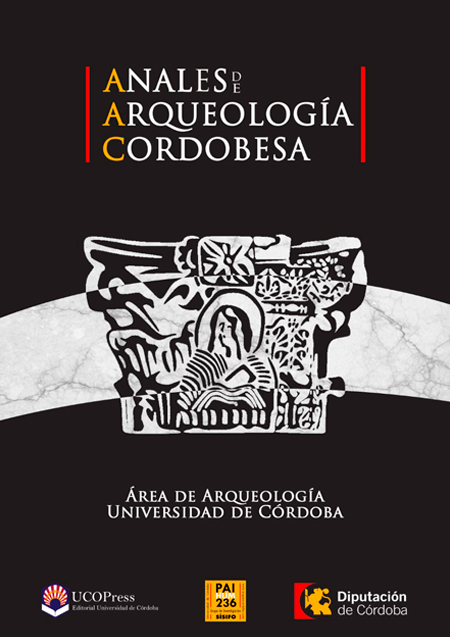Pistores dulciarii in the neighborhood of the roman forum of Carthago Nova. Regarding two new pottery moulds
DOI:
https://doi.org/10.21071/aac.v28i0.10193Keywords:
Pottery molds, Kuchenformen, Cartagena, arx Hasdrubalis, iconography, ludi circenses, leporidAbstract
This article presents two pottery moulds, the so called “kuchenformen”, retrieved in the archaeological excavations carried out in the Archaeological Park of Molinete (Cartagena, Spain). These objects were found at the insula IV of the “Barrio del Foro”, located at the foot of the south-eastern slope of the arx Hasdrubalis, between the Roman Forum and the sanctuary of Isis and Serapis. The archaeological research suggests that these artefacts are a special type of tools used in the Roman bakeries (pistrina) dated during the second half of the 2nd and the middle of the 3rd century ad. We study their iconography, that included a scene of ludi circenses and a leporid.Downloads
Download data is not yet available.
Downloads
Published
2017-12-21
How to Cite
VIZCAÍNO SÁNCHEZ, J., NOGUERA CELDRÁN, J. M., & MADRID BALANZA, M. J. (2017). Pistores dulciarii in the neighborhood of the roman forum of Carthago Nova. Regarding two new pottery moulds. Anales De Arquelogía Cordobesa, 28, 127–152. https://doi.org/10.21071/aac.v28i0.10193
Issue
Section
ARTICLES
License
Aquellos autores/as que tengan publicaciones con esta revista, aceptan los términos siguientes:- Los autores/as conservarán sus derechos de autor y garantizarán a la revista el derecho de primera publicación de su obra, el cuál estará simultáneamente sujeto a la Licencia de reconocimiento de Creative Commons que permite a terceros compartir la obra siempre que se indique su autor y su primera publicación esta revista.
- Los autores/as podrán adoptar otros acuerdos de licencia no exclusiva de distribución de la versión de la obra publicada (p. ej.: depositarla en un archivo telemático institucional o publicarla en un volumen monográfico) siempre que se indique la publicación inicial en esta revista.
- Se permite y recomienda a los autores/as difundir su obra a través de Internet (p. ej.: en archivos telemáticos institucionales o en su página web) antes y durante el proceso de envío, lo cual puede producir intercambios interesantes y aumentar las citas de la obra publicada. (Véase El efecto del acceso abierto).


